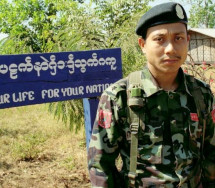The Myanmar National Democratic Alliance Army (MNDAA) in Kokang was the first of over 15 armed opposition groups to conclude a cease-fire agreement with the military government. The fighting forced 37,000 people to flee across the border to China, and killed an estimated 200 civilians.
The resumption of fighting in northern Burma raises speculation about the other cease-fires. Tensions are rising and the cease-fire groups have put their armed forces on high alert. They are preparing for battle but say they will continue to seek political change through dialogue, and will not fire the first shot.
Instead of isolating and demonising the cease-fire groups, the international community should engage with them involve them in discussions about political change in the country.
Ethnic conflict must be resolved in order to bring about a lasting political solution in Burma. If ethnic minority needs and goals are not addressed peace and democracy are extremely unlikely to be achieved in Burma.

